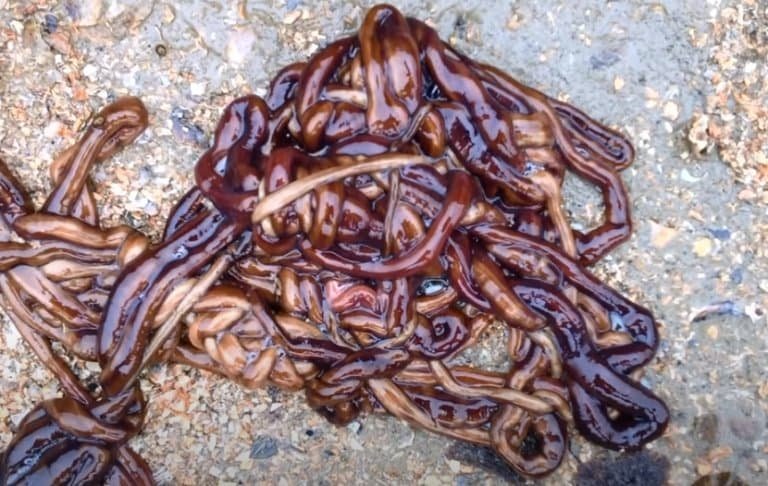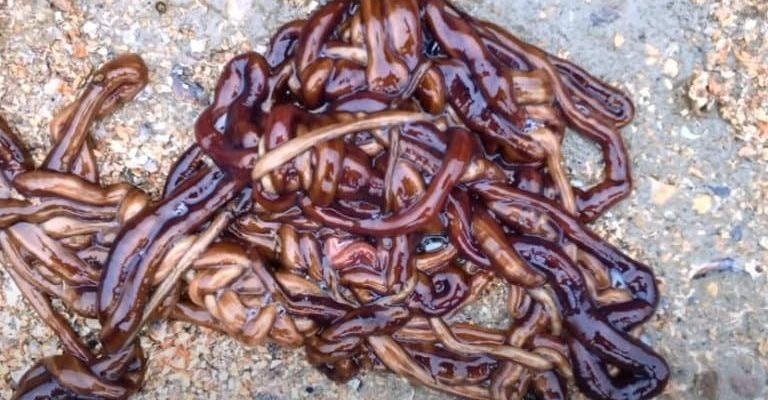
Imagine a bustling neighborhood, where bootlace worms mingle with mussels—an odd yet surprisingly educational community. It’s like watching a curious neighborhood potluck, where each participant brings something unique to the table. The interactions between bootlace worms and mussel beds reveal a lot about marine ecosystems and how different species rely on one another for survival.
Let’s dive deeper into this underwater relationship and uncover why these interactions matter not just to the creatures involved but also to the ecosystems they inhabit.
Understanding Bootlace Worms
Bootlace worms, or *Lineus longissimus*, are remarkable organisms that can often be found in shallow waters. Their elongated bodies are somewhat reminiscent of a shoelace, which is how they got their name. They may look like simple, squiggly worms, but they have a complex lifestyle filled with interesting traits.
One of the cool things about bootlace worms is their reproduction method. They are known for being **hermaphroditic**, meaning they have both male and female reproductive organs. When they mate, they can exchange sperm with another worm, which increases genetic diversity and boosts their population.
Bootlace worms also have a unique feature: they can regenerate lost body parts. If a predator decides to take a chunk out of one, the worm can grow it back! This survival mechanism helps them thrive in environments where danger lurks, like around mussel beds.
The Role of Mussel Beds in Marine Ecosystems
Mussel beds are like bustling urban centers in the marine world. These clusters of mussels create habitats that support a variety of marine life. Beneath the surface, mussels filter water, improving its quality while providing shelter and food for countless organisms.
Mussel beds act as natural buffers, protecting shorelines from strong waves and erosion. They also offer a rich feeding ground for many fish species and other marine creatures. Think of it as a thriving restaurant where different species come to dine, socialize, and thrive.
Moreover, mussels are excellent bioindicators, meaning they can give scientists insights into the overall health of a marine environment. Their presence (or absence) can highlight problems like pollution or changes in water temperature, helping us better understand the ecosystem’s balance.
How Bootlace Worms Benefit from Mussel Beds
Bootlace worms and mussel beds share a mutually beneficial relationship, which is essential for their survival. For bootlace worms, mussel beds provide shelter from predators and harsh environmental conditions. Imagine being in a cozy blanket fort on a chilly day; that’s how bootlace worms feel when they’re around mussel clusters.
Additionally, mussels excrete waste that can be a source of nutrients for bootlace worms. This symbiotic relationship means that as mussels filter water and feed, they also support the bootlace worm population. It’s a win-win situation: mussels purify the environment while bootlace worms get a nutritious boost.
You might be wondering how this works in practice. When the bootlace worms burrow near mussel beds, they can access **detritus**—organic material that’s broken down and becomes food for many marine organisms. This makes the worm’s habitat rich in nutrients, promoting their growth and reproduction.
The Predatory Side of Bootlace Worms
While bootlace worms enjoy many benefits from their environment, they are not just passive participants. In fact, they can also be predators, feeding on small crustaceans and other tiny organisms that share their habitat. This predatory behavior showcases their versatility and adaptability in the wild.
Bootlace worms use their **sticky mucus** to capture prey. Picture a spider weaving a web; the worm’s sticky properties allow it to ensnare unsuspecting victims. This not only provides food for the worm but also helps control populations of smaller marine organisms.
This predatory tendency can have an impact on the mussel beds themselves. While they primarily benefit from the presence of mussels, bootlace worms can alter the dynamics of the ecosystem by preying on smaller organisms that might otherwise compete with mussels for resources.
Environmental Challenges and Conservation
Like many marine species, bootlace worms and mussel beds face challenges due to *human activity* and *climate change*. Pollution, habitat destruction, and rising sea temperatures threaten these delicate ecosystems.
For example, coastal development can destroy mussel beds, leading to fewer resources for bootlace worms and other marine life. Similarly, increased water temperatures can affect mussel reproduction and growth, which may destabilize the entire community.
Conservation efforts play a crucial role in protecting these habitats. Creating marine protected areas allows ecosystems to thrive without human interference. By safeguarding mussel beds, we also help ensure that bootlace worms and many other species have a stable environment to flourish.
Future Research and Understanding
The relationship between bootlace worms and mussel beds is still an area ripe for research. Scientists are continually exploring how these interactions influence biodiversity and ecosystem health. Understanding these relationships can help improve conservation strategies and ecosystem management.
Researchers are now using new technologies, like underwater drones and sensors, to study these organisms in their natural habitats. This innovative approach not only reveals hidden behaviors but also helps in monitoring environmental changes over time.
As we learn more about these fascinating interactions, we can apply this knowledge to protect not just bootlace worms and mussel beds but the entire marine ecosystem they inhabit.
Bootlace worms and mussel beds may seem like an unusual duo, but their interactions tell an important story about marine ecosystems. From providing shelter and nutrients to showcasing fascinating behaviors, these connections highlight the complexity of life underwater.
Just like any thriving community, their relationship is built on resilience and interdependence. As we face environmental challenges, understanding these interactions becomes more critical than ever. By protecting mussel beds, we not only support bootlace worms but also contribute to the overall health of our oceans. Let’s keep this underwater neighborhood thriving for generations to come!

